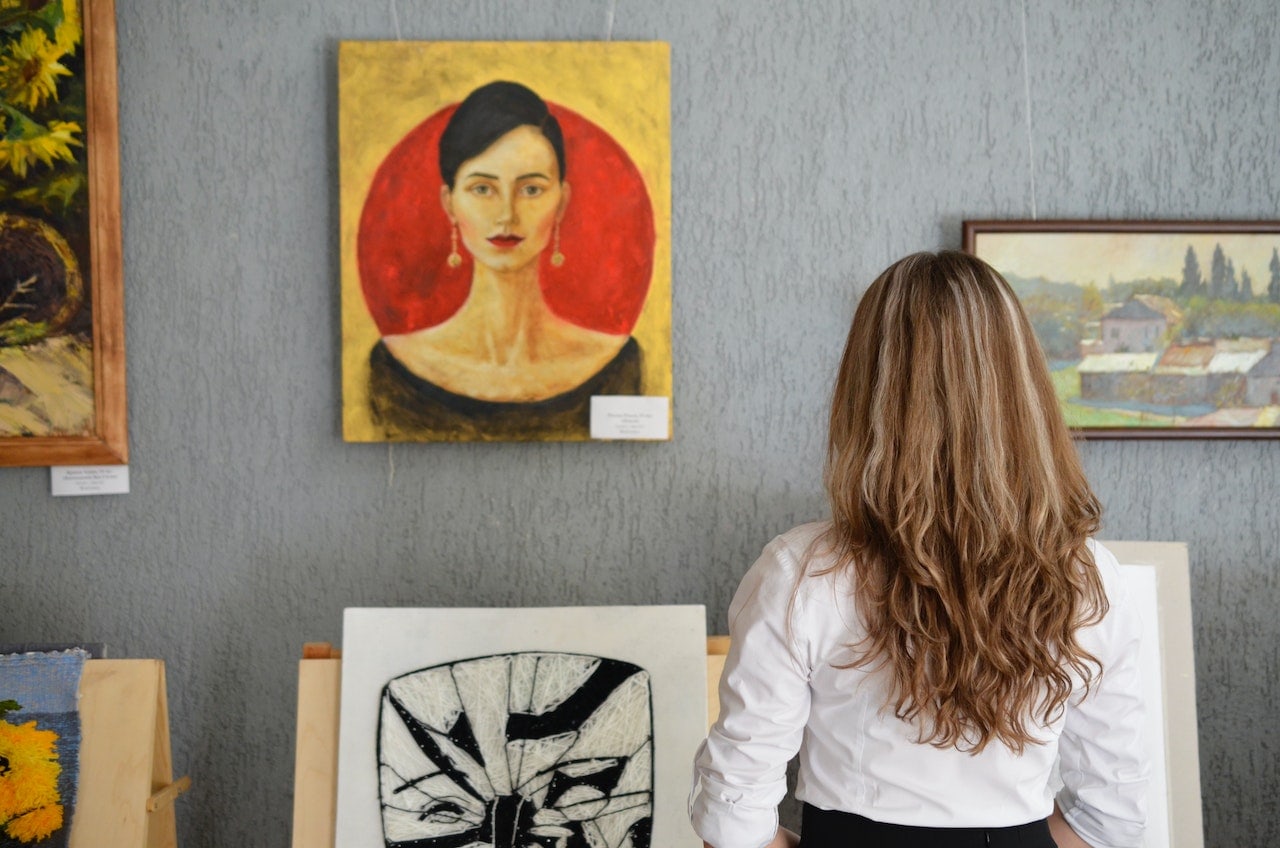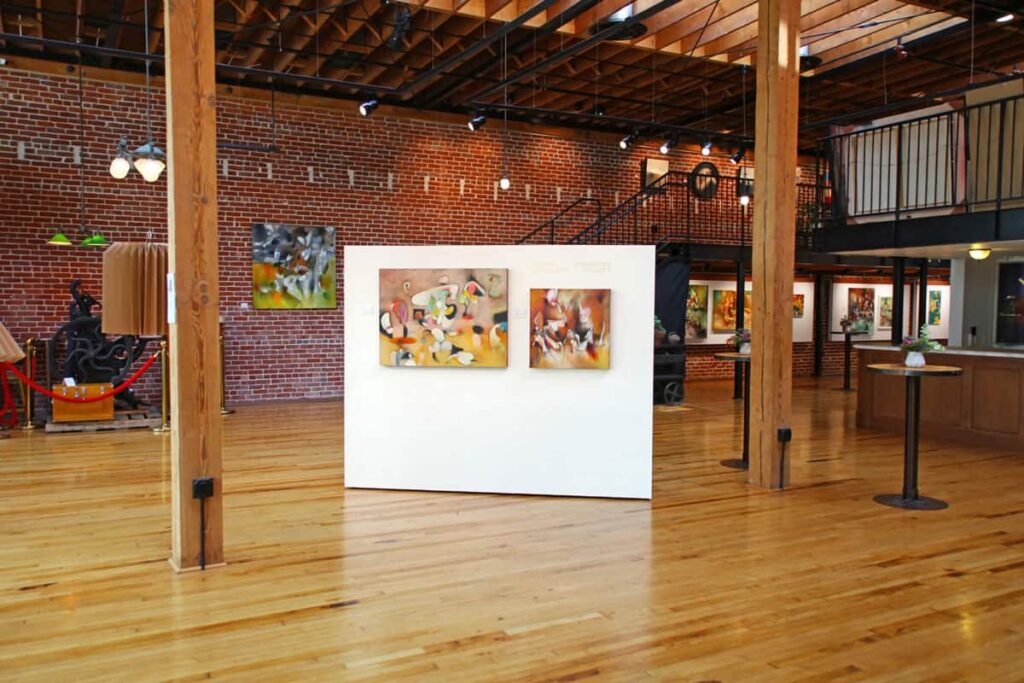Buying Art for Beginners: Tips & Myths

Art is one of the oldest forms of human expression. It can be used to communicate ideas, tell stories, or elicit emotion. For centuries, art has been a way for people to express their unique individuality and personal style. If you’re interested in buying art online or in person but don’t know where to start, this article can help.
Looking to buy art online? Shop the Sparks Gallery online store for Contemporary Artwork primarily by Southern California artists who innovate and provide excellent craftsmanship in a multitude of mediums. SHOP NOW ->
Art Buying Tips for Beginners
When it comes time to add fine artwork to your collection, there’s no need to feel overwhelmed. With careful consideration, anyone can become an educated and savvy collector, regardless of budget constraints.
Below are five simple guidelines, which arm fledgling buyers with all they need to know before investing in their first pieces of artwork for their collection.
Research Artists, Styles, and Mediums
When buying art, it is important to research artists, styles, and mediums for several reasons.
Firstly, understanding the artist and their style can help you make an informed decision about whether the piece is a good fit for your personal taste and collection.
By researching the artist’s background, influences, and previous works, you can gain insight into their creative process and the message or emotion they are trying to convey through their art.
This can help you determine if the piece resonates with you and if it will complement your existing collection, or fit into the aesthetic of your home or office space.
Secondly, researching the artist can provide valuable context for their art pieces, enhancing your appreciation and understanding of them.
For example, if the artist is associated with a particular movement or school of thought, learning about that movement can give you a deeper understanding of art and its place in art history. This can make the viewing and ownership experience more meaningful and enriching.
Lastly, research can also help you make more informed financial decisions. By learning about the artist’s market value and the demand for their work, you can have a better sense of whether the price of the piece is fair and whether it is likely to appreciate in value over time.
This can help you avoid overpaying for a piece or making a poor investment.
Researching the artist and their style can help protect you from purchasing counterfeit or plagiarized art. By gaining a thorough understanding of the artist’s work, you can more easily identify imitations or reproductions that do not meet the high standards of the original artist. Request documentation from the seller, such as a certificate of authenticity and appraisals for the work, and purchase through reputable sellers.
If you know what museum or gallery the work of art you are interested in is located , check the institutions’ website for more detailed information on the artist. Many museums and galleries will provide the most up to date information on their artists. There are also plenty of informational blogs and websites that can provide the information you are looking for.
Understand Your Budget and Taste
Knowing your taste and budget when buying art is very important.
Understanding your personal aesthetic preferences for style, medium, size, colors, subject matter, etc. helps you make informed decisions about which pieces of art to purchase. This can prevent you from buying art that you may not ultimately be satisfied with, saving you both time and money in the long run. Creating a Pinterest board, or mood board of images that you like can give you a guide to what you are innately gravitating towards.
Managing your budget is crucial for ensuring that you don’t overspend on art. It can be easy to get caught up in the excitement of buying a beautiful piece of art, but if it exceeds your budget, it may cause financial stress down the line.
By setting a budget and sticking to it, you can avoid this potential issue.
Being aware of your taste and budget can also help you narrow down your options when it comes to choosing art. There is a vast array of art available on the market, and having a clear idea of what you like and can afford can help you avoid getting overwhelmed by the sheer number of choices.

Visit Local Galleries and Art Events
Visiting local galleries and art shows is an important aspect of buying because this allows you to see art in person, rather than just viewing it online or in a catalog.
Seeing art in person allows you to fully appreciate its beauty and craftsmanship, and can help you make more informed decisions about which pieces to purchase.
Visiting a local gallery provides an excellent opportunity to meet and interact with the artists themselves. This can be a valuable experience, as it allows you to learn more about the artists and their inspirations, and can even provide you with the opportunity to commission custom pieces.
Attending art shows can also be a great way to support your local art community. By purchasing art from local artists, you are helping to support their work and contribute to the growth and development of the local art scene.
Protect Your Art
Protecting purchased art is important because it helps to preserve the piece and prevent it from being damaged, stolen, or lost. Properly storing and displaying the art can help to maintain its aesthetic value and ensure that it can be enjoyed for years to come.
There are several steps you can take to protect the art you buy.
Make sure art is properly framed or mounted. This will help to prevent damage to the piece and ensure that it is properly displayed. Use high-quality framing materials, and make sure that the frame or mounting is securely attached to the art. Galleries can recommend framing options, or do a search for reputable framers in your area. Be sure to inquire about archival and acid-free materials when framing and storing work long-term.
Related: Sparks Gallery Client Resources, and framing options.
Avoid displaying art in direct sunlight, or in other areas with high levels of humidity or heat. This can cause the colors in the art to fade or the materials used in the piece to deteriorate over time.
When possible, hang the art in a well-ventilated, temperature-controlled area.
Consider purchasing insurance for your art. This can provide financial protection in the event that the art is damaged, stolen, or lost. Make sure to carefully read the terms of the insurance policy and ensure that it covers the type of art you have purchased.
Looking to buy art online? Shop the Sparks Gallery online store for Contemporary Artwork primarily by Southern California artists who innovate and provide excellent craftsmanship in a multitude of mediums. SHOP NOW ->
Myths About Buying Art
We are here to dispel several art myths that we hear often in our gallery.
It is Only for “Old People”
Everyone can appreciate and enjoy art, regardless of their age.
There is a wide range of art available on the market, from more traditional forms to contemporary and avant-garde styles, so there is something for everyone to enjoy. Buying art can be a smart investment, as some pieces may increase in value over time.

Art is Only for Decorating Homes
Art can be enjoyed in a variety of settings, such as museums, galleries, public spaces, businesses, restaurants, offices, hotels, and even outdoor environments. It is much more than just a decorative element for the home. Art is a powerful tool for sparking conversation and promoting dialogue on important social and cultural issues.
Art Buying is not an “Experience”
Buying art is an experience that can be both exciting and rewarding. It involves exploring different styles and mediums, discovering new artists, and learning about the art world.
The process of buying art often begins with browsing galleries and art shows, which can provide an opportunity to see a wide variety of art in person. This can be a thrilling experience, as it allows you to appreciate the beauty and craftsmanship of the art up close.
Visiting galleries and art shows can also provide the chance to meet and interact with the artists themselves, which can provide valuable insights into their inspirations and techniques.
Once you have found a piece of art that you love, the process of buying it can be equally exciting. This may involve negotiating a price with the artist or gallery, making payment, and taking the art home.
The anticipation of waiting for the art to be delivered or ready for pickup can be thrilling, and the moment of finally seeing the art in your own space can be incredibly satisfying.
Prices of Artwork Increase when You Buy at a Gallery
Galleries typically have relationships with the artists they represent, which allows them to offer the artwork at a fair price. Also, galleries often provide services such as framing and installation, which can save the buyer time and money.
Furthermore, buying from a gallery can provide peace of mind, as the artwork is typically authenticated and may come with a certificate of authenticity. Galleries often have a return policy, which provides the buyer with some level of protection in case the artwork does not meet their expectations.
Overall, buying art in a gallery can be a cost-effective option for those looking to add the artwork to their collection. The value of the piece does not necessarily increase as soon as it is purchased, as the artwork is priced by the fair market value of the artwork, and what the collectors are willing to pay for the piece. Factors such as inflation, the death of the artist (scarcity), demand, and other economic reasons are what will drive up the value of any art piece.
Buying Art for Beginners FAQ
How do I Find and Buy Original Art?
Once you have a good understanding of your taste and budget, it’s time to start shopping. One option is to visit galleries and art fairs, where you can see the art in person and talk to the gallery staff to learn more about the piece. Another option is to shop online, where you can find a wide variety of art from different artists.
When making a purchase, be sure to ask the seller for a signed certificate of authenticity, which will help confirm that the artwork is genuine. It’s also a good idea to ask about the seller’s return policy, in case the artwork does not meet your expectations.
Once you have made a purchase, it’s important to take good care of the art to ensure that it maintains its value. This may involve properly framing and hanging the piece, as well as keeping it away from direct sunlight and other elements that could damage it.
Overall, buying art can be a rewarding experience, but it’s important to do your homework and be prepared before making a purchase. Some sellers provide payment plans for art purchases as well. By taking the time to research the artist and the artwork, and working with reputable sellers, you can be confident that you are making a sound investment in a piece that you will enjoy for years to come.

Is it Safe to Buy Art Online?
Buying art online can be a safe and enjoyable experience. Here are some reasons why:
Reputable online art galleries and marketplaces have secure payment systems in place, so your financial information is safe.
Many online art sellers offer a money-back guarantee, so if you’re not happy with your purchase, you can return or exchange it.
You have the opportunity to do thorough research on the artist and the artwork before making a purchase. You can read reviews, look at high-quality images of the piece, and even get expert opinions.
Negotiate a fair price for the artwork you’re interested in, especially if you’re buying directly from the artist.
Buying art online gives you access to a much wider selection of artwork than you would have if you were limited to your local galleries. You can easily find unique, one-of-a-kind pieces that you may not be able to find elsewhere.
How Do You Know if Art is Original or a Print?
There are a few key ways to determine if a piece of art is an original or a reproduction print. Here are some tips:
- Look at the materials the artwork is made of. Original art is typically created using unique materials such as paint, charcoal, or clay. Prints, on the other hand, are usually made using an ink or pigment printer on high-quality paper or canvas.
- Examine the surface of the artwork. Original art will often have visible brushstrokes, fingerprints, or other unique markings. Prints, on the other hand, will have a uniform surface.
- Check for a signature. Original art will typically have a signature from the artist, either in the corner of the piece or on the back. Prints, on the other hand, may not have a signature or may have a reproduction signature that is not hand-signed by the artist.
- Ask the seller about the artwork’s provenance. Original art will often have a history of ownership and exhibition, which can help confirm its authenticity. Prints, on the other hand, may not have this information.
- Ask the seller if the piece is “embellished”, meaning that they have printed a copy of the artwork on paper or canvas, and then painted or applied elements such as gold leaf to their reproduction to add texture and depth. This can be a way to collect work with a lower price point than an original, while having a small amount of the artist’s actual handiwork that mimics the original piece’s dimensional qualities.
By carefully examining the materials, surface, signature, and provenance of a piece of art, you can often determine if it is an original or a print.
What Original Art Sells Best?
Original art that resells well typically has a few key characteristics. Here are some factors to consider:
The artwork is created by a well-known and respected artist. Art collectors are often willing to pay a premium for pieces by artists with established reputations.
The artwork is in good condition. Pieces that are damaged or have been poorly preserved are less likely to resell well.
The artwork is unique and thought-provoking. Collectors are often drawn to pieces that stand out and challenge their perceptions.
The artwork has a strong provenance. Pieces with a history of ownership and exhibition are often more valuable and more likely to resell well.
The artwork is from a sought-after period in the artist’s career. Collectors often look for pieces from specific periods of an artist’s life, such as their early work or their most famous series.
In summary, original art that resells well is typically created by a well-known artist, is in good condition, is unique and thought-provoking, has strong provenance, and is from a sought-after period in the artist’s career.
Is Art a Good Investment?
Buying art may be a great investment depending on what pieces you choose to add to your collection.
Art traditionally appreciates in value over time, which means that the piece you purchase today may be worth significantly more in the future. This can be a great way to diversify and potentially earn a good return on your investment.
Owning art can be a source of personal enjoyment and fulfillment. It can add beauty and culture to your life, and even serve as a conversation starter with friends and guests.
Buying art from emerging artists can also be a way to support the arts community, and contribute to its growth and development. Buying art can be a financially savvy and personally rewarding decision.

Art Buying for Beginners Final Thoughts
Art buying for beginners can be an easy and incredibly rewarding way to express your unique individuality, personal style, and taste. With a little research and guidance from experts, you can discover the world of art that is perfect for your home, office, or outdoor space.
With so many options available, you are sure to find the right piece of art that speaks to you and enhances your surroundings.
Looking to buy art online? Shop the Sparks Gallery online store for Contemporary Artwork primarily by Southern California artists who innovate and provide excellent craftsmanship in a multitude of mediums. SHOP NOW ->

